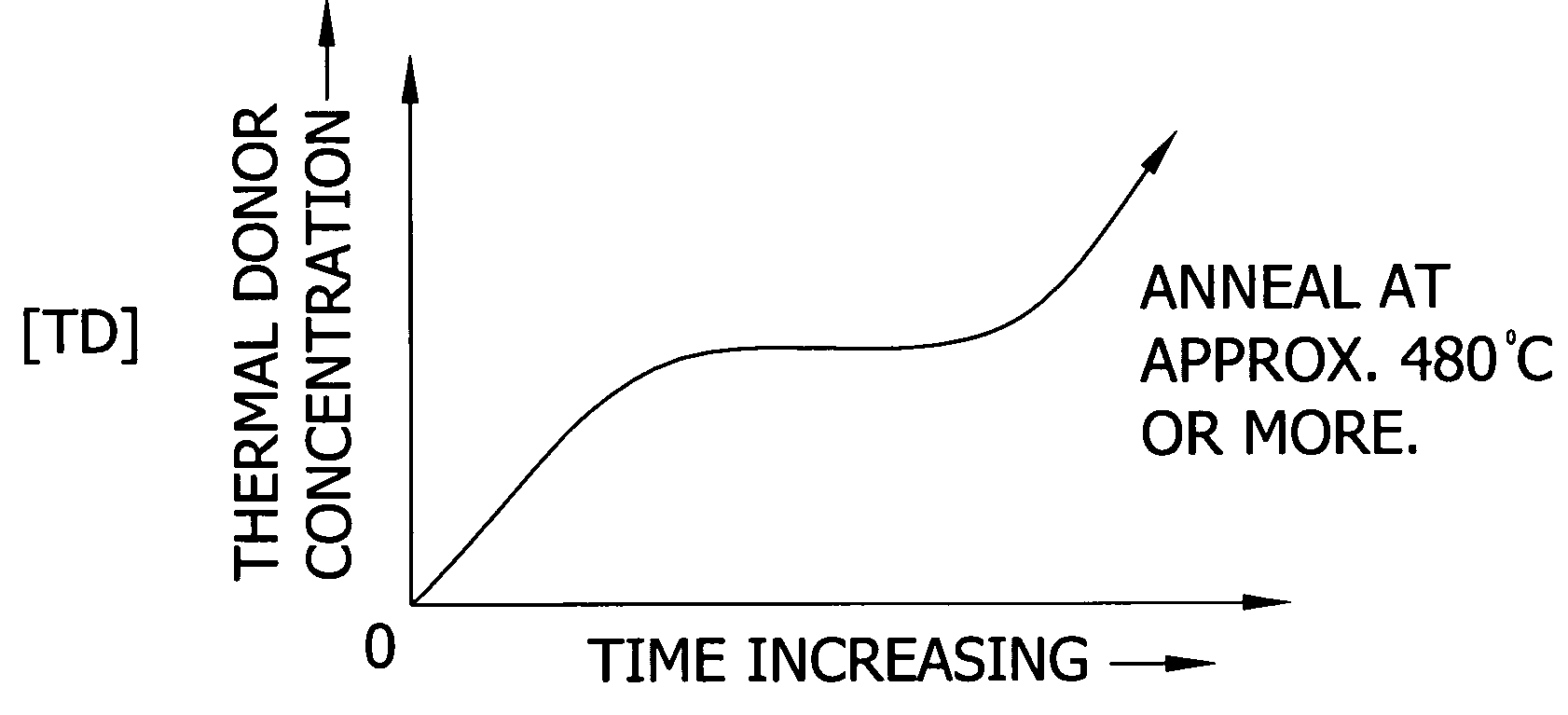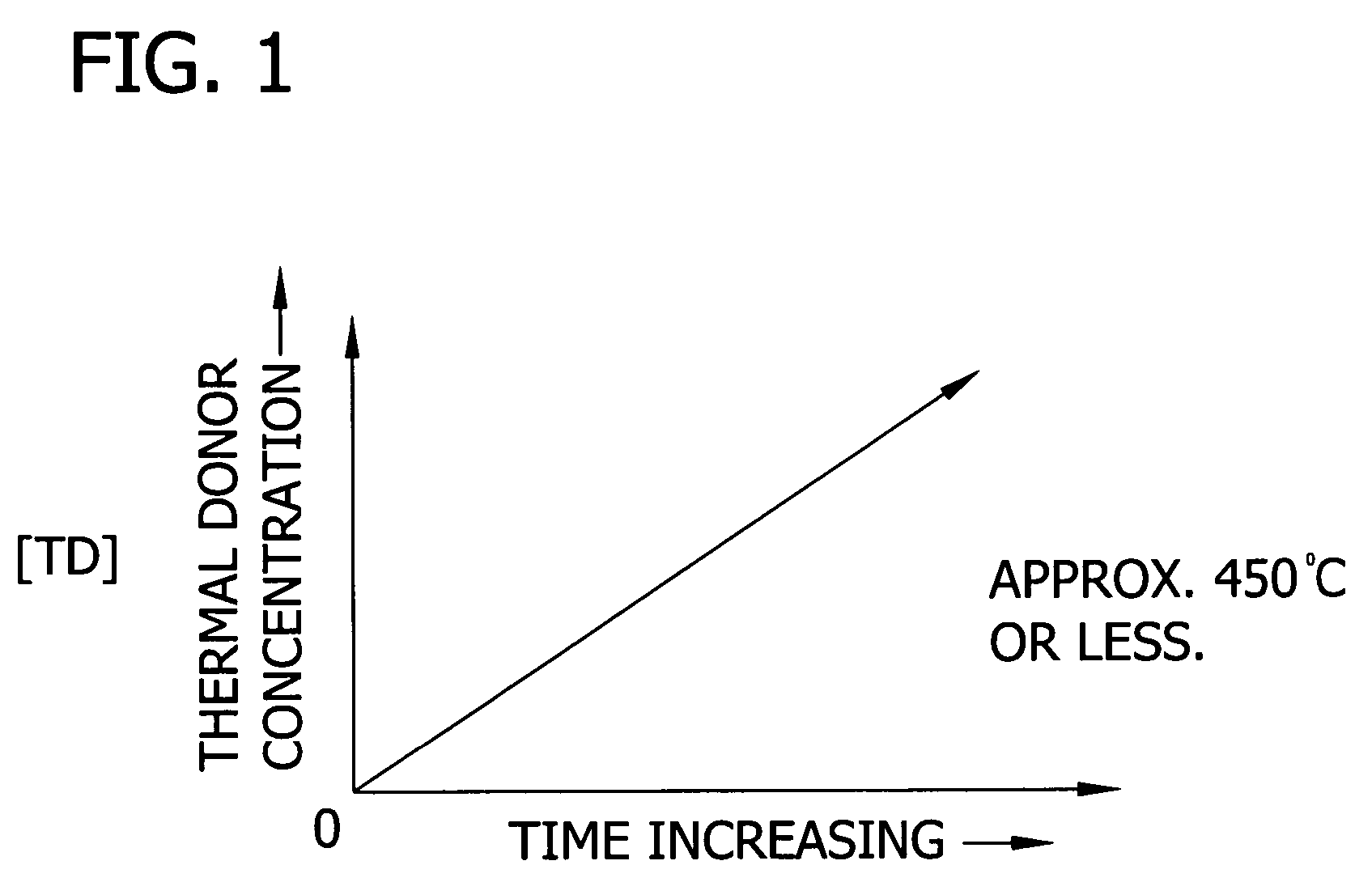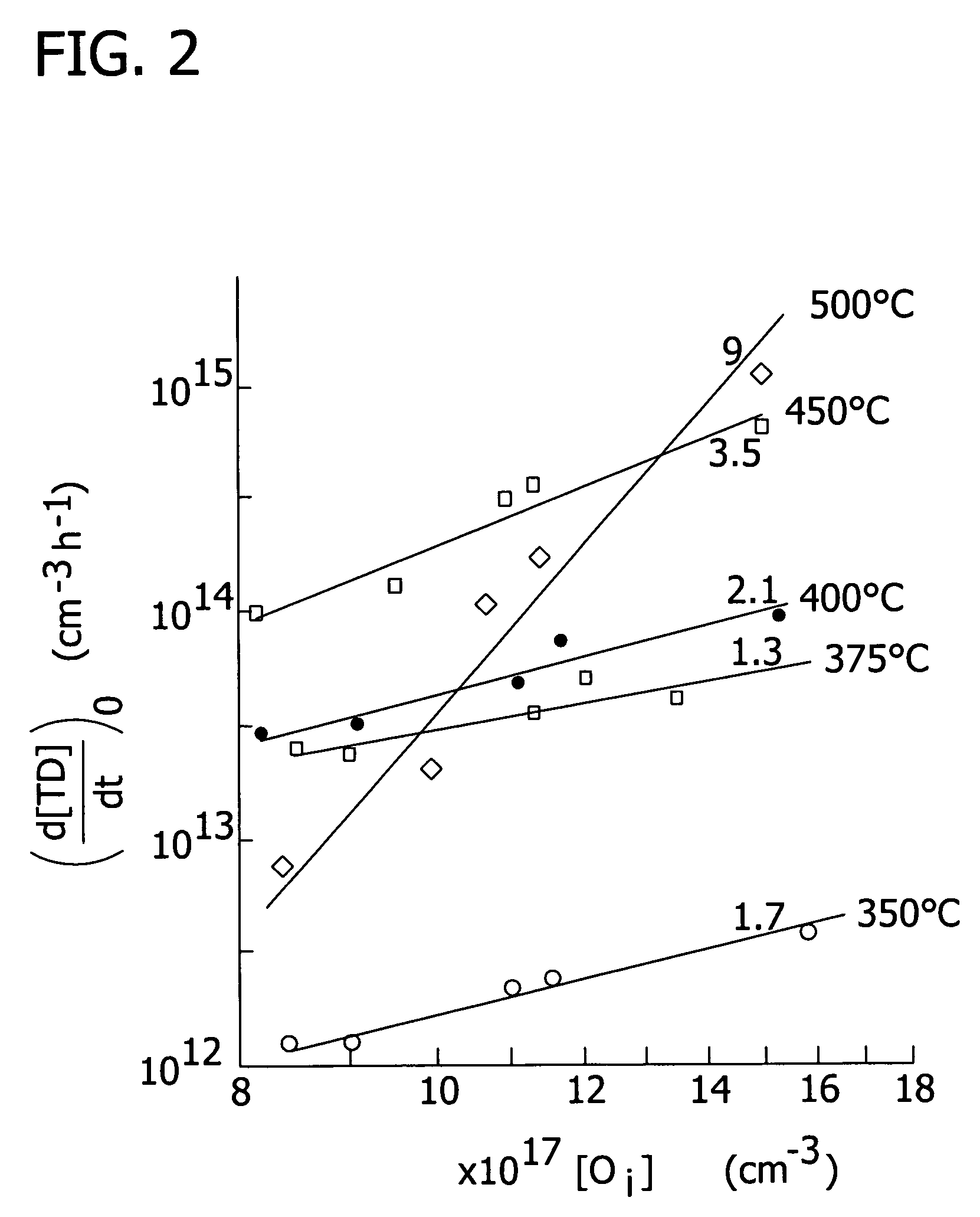High resistivity silicon structure and a process for the preparation thereof
a silicon structure and high resistivity technology, applied in the direction of crystal growth process, after-treatment details, polycrystalline material growth, etc., can solve the problems of high manufacturing cost, lack of mechanical stability, material limitations, etc., and achieve high resistivity
- Summary
- Abstract
- Description
- Claims
- Application Information
AI Technical Summary
Problems solved by technology
Method used
Image
Examples
example 1
[0118]An example of the results that may be obtained using the techniques of the present invention, and as set forth in Equation (1a) herein, is found in FIG. 14. The resistivity data in FIG. 14 was obtained from Hall Effect determinations of carrier concentrations at different stages during the annealing of a wafer under conditions defined in this invention. In this example, a sample initially having a resistivity of about 300 ohm-cm (i.e., [B] equal to about 4e13 cm−3), and an oxygen concentration of about 6.5e17 cm−3, was used. The appropriate annealing temperature to achieve the high resistivity effect in a sample of this type was determined to be about 530° C. In this particular example, previously generated thermal donors were also present in the sample and the sample was actually n-type prior to the annealing (due to a prior 3 hour annealing at about 450° C.).
[0119]FIG. 14 shows the development of the resistivity, as deduced from the Hall Effect measurements, of this sample o...
example 2
[0121]Further to Example 1, above, and to demonstrate further the highly desirable “approximate” matching of conditions afforded by the present invention (and in accordance with Equation (1a) presented herein), samples similar to that used in Example 1 were annealed at temperatures near the calculated temperature of, in this instance, about 530° C. for this type of material. The results of the saturated resistivity following the anneal are shown in FIG. 15.
example 3
Comparative Example
[0122]This Example is to illustrate how the resistivity versus temperature curve, ρ(T), would look without a self-compensation effect.
[0123]In a simple “normal” case, when there is no reconstruction-based self-compensation, the resistivity is controlled essentially only by the achieved difference N=2Ntd(T,C)−NA. At N>0, the carrier (electron) concentration is n=N. At N<0, the carrier (hole) concentration is p=−N. More generally, at a very small difference N, the resistivity may approach the intrinsic value, and a more general expression for n and p may be used in this case (which is seldom to be met):
n=N / 2+[(N / 2)2+ni2]1 / 2, (2)
p=−N / 2+[(N / 2)2+ni2]1 / 2, (3)
where ni is the intrinsic electron concentration (close to about 1.3×1010 cm−3 at room temperature). The resistivity is ρ=1 / (eμnn+eμpp). The drift mobilities μn and μp are about 1,550 cm2 / sV and about 450 cm2 / sV, respectively (at room temperature).
[0124]The donor / acceptor difference, N, is convenient to write usin...
PUM
 Login to View More
Login to View More Abstract
Description
Claims
Application Information
 Login to View More
Login to View More - R&D
- Intellectual Property
- Life Sciences
- Materials
- Tech Scout
- Unparalleled Data Quality
- Higher Quality Content
- 60% Fewer Hallucinations
Browse by: Latest US Patents, China's latest patents, Technical Efficacy Thesaurus, Application Domain, Technology Topic, Popular Technical Reports.
© 2025 PatSnap. All rights reserved.Legal|Privacy policy|Modern Slavery Act Transparency Statement|Sitemap|About US| Contact US: help@patsnap.com



